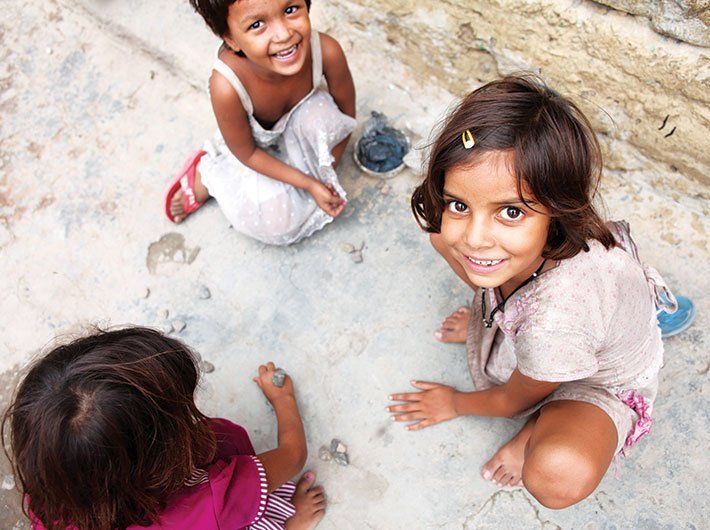As the country celebrates National Girl Child Day on January 24, a look at major issues concerning the girl child in India. We still stand at 943 girls per 1,000 boys
India is the most dangerous place in the world to be born as a baby girl. It has the dubious distinction of having 75% more chances of girl children aged between 1-5 years dying as compared to boy children. India is among the fastest growing economies in the world, with a contradicting child sex ratio world ranking at 192 out of 201, 42 out of 50 in Asian countries, United Nations (2015).
Children have been victims of domestic labour but gender inequality in India has made it harder on our little girls who, when they should be nurtured in a safe environment, are made to earn for themselves or their families. Early marriage, malnutrition, lack of education, trafficking, health and mortality, neglect and discrimination, abuse, exploitation, violence, domestic labour are the issues these little girls jostle with from an early age. At an age when they should be growing and learning in a normal environment they are exposed to brutalities that irreversibly alter their childhood.
Among various forms of atrocities that our young girls face, domestic labour has been in practise for a long time and has sadly intensified over a period of time. 2.6 million girls within the age bracket of 6-12 years are working as domestic helps. The myth that only the uneducated perpetuate child labour has been busted because our cities which are full of educated, classified, learned people keep little girls as domestic helps and subject them to rampant abuse.
There are many root causes of child domestic work, but in broad terms we can differentiate between “push and pull” factors. Among the first is poverty and then comes social exclusion, lack of education, gender and ethnic discrimination, violence suffered by children in their own homes, displacement, rural-urban migration and the loss of parents due to conflict and/or disease. Among the latter, we can talk about increasing social and economic disparities, debt bondage, in addition to the perception that the employer is simply an extended family and therefore offers a protected environment for the child. Also, the increasing need among households to have domestic “replacements” which enables more and more women to enter the labour market, and the all pervasive urban illusion that domestic service gives child workers an opportunity for education.
Sympathy and empathy are two different sides of the same coin and can be better understood within the confines of our social media when most of us transform into being opinionated about justice, rights and safety of the girl child, yet remain largely ignorant of the core issues. More than pointing fingers and numbingly liking the right things online, does not mean things change offline! Each one of us can make a difference. Helpline numbers, government organisations, NGOs can be contacted if you see gross abuse of a domestic child labourer. Individually each one of us can keep a track of the cases that is reported ensuring necessary action taken against perpetrators. Ensuring that your locality duly follows the rule of law and refrains from employing young girls below the age of 14 is one aspect that can be made into the rule in bigger gated communities. What if each one of us reports and calls agencies that provide domestic help services of girls below the age of 14? Can we effectively then put a slow end to the pull factor from urban cities? But this also requires a dedicated change in the mindsets of people (both middle-class and the affluent) who traditionally employ young girls. The widely prevalent notion that employing underage children is benevolent, as you are lifting them out of poverty by providing them shelter, food and clothing, needs to be busted. In fact, a majority of domestic working children work long hours for low wages and are exploited and abused physically and mentally.
One of the less highlighted landmark case in this area is the Karnataka government’s plea to cut down power in places where children under the permissible age of 14 years work. The supreme court has favoured the plea. This is one of the preeminent solutions to zero tolerance of violence against children. Policies should not only be the voice that makes a difference in what should be an equal effort by everyone. One of the exceptional initiatives that was recently witnessed was by Mahesh M Bhagwat, commissioner of police, Rachakonda, inaugurated a government school in Chotuppal for local poor children, who had been rescued from different places working as child labour, out of 800 children, 180 have already been enrolled in the school.
Besides these efforts, each one of us must pay due attention to the gross disparities between girls and boys, belonging to various castes and classes.
Sukriti is a program officer at Public Affairs Centre- a not for profit think tank


